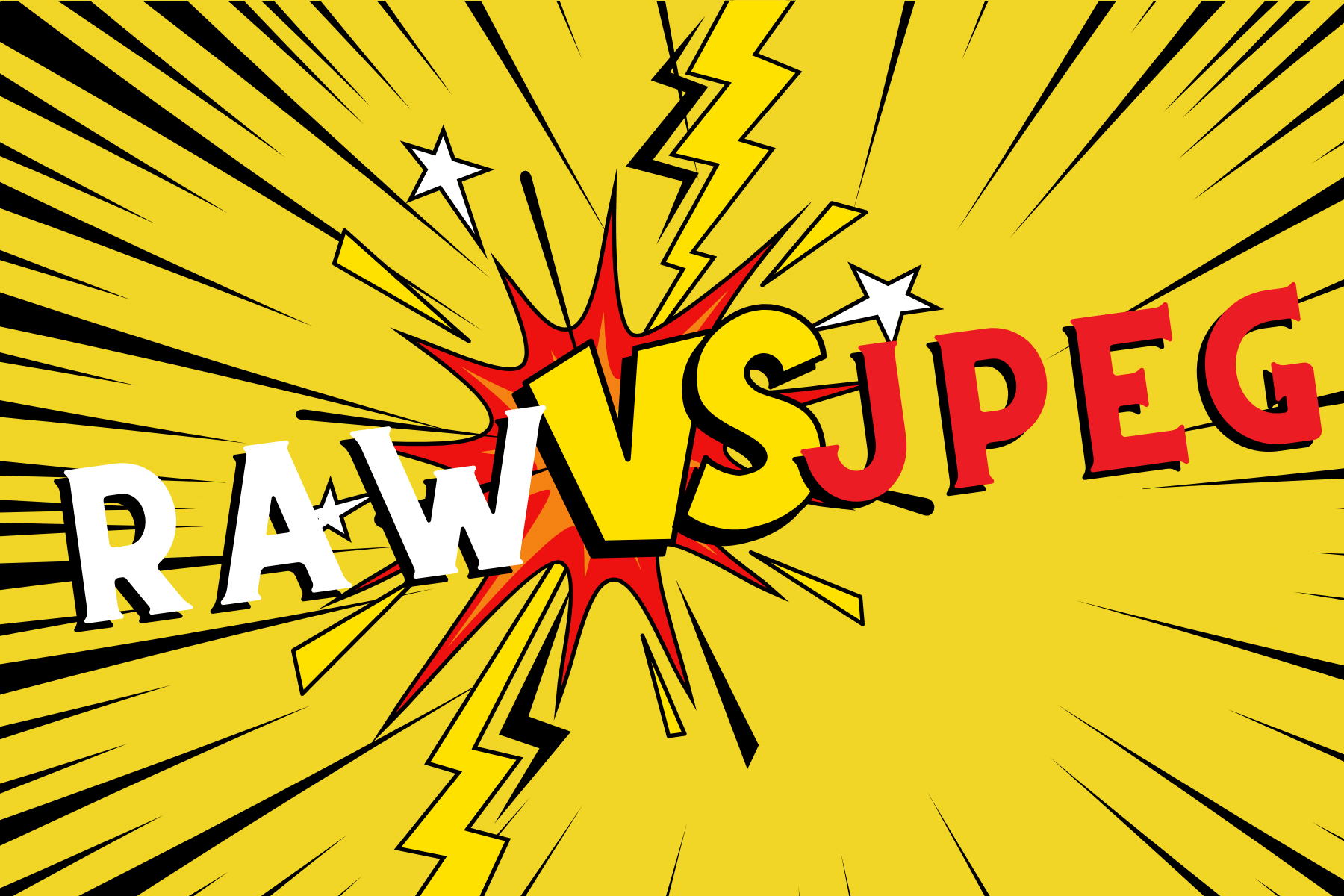The decision regarding the file format for your photographs wields the power to significantly influence the ultimate quality and the breadth of creative opportunities encapsulated within your images. As you navigate the settings of your camera, you'll be introduced to a duo of fundamental shooting formats: RAW and JPEG.
The eternal debate about the superiority of RAW over JPEG surfaces time and again among photographers venturing into the realm of digital photography. Here, we'll dive deeper into the advantages of the RAW format, elucidate the characteristics of RAW and JPEG images, and explore the nuanced differences between these formats to empower photographers with a comprehensive understanding for making informed decisions regarding their preferred file types.

Understanding the RAW Format
A RAW file is a pristine container capturing unadulterated data straight from your camera's sensor. The term "RAW" aptly suggests that this format preserves a photograph's raw "ingredients" analogous to a digital negative. However, the true magic of a RAW file lies in its potential, which demands post-processing to manifest.
While RAW files occupy more digital real estate than their compressed counterparts, the allure of RAW for professional photographers lies in its promise of abundant data for meticulous post-processing adjustments. The subtleties of light, color, and detail within a RAW file are akin to a painter's palette, ready to be skillfully manipulated to bring forth the photographer's vision.

Understanding the JPEG Format
Contrary to RAW's unprocessed nature, JPEG files result from compressing RAW images. This compression process resembles creating a digital "zip file" that neatly packages visual information. However, the trade-off is that JPEGs, although more compact, need more extensive knowledge present in RAW files.
This compromise is at the heart of the RAW vs. JPEG debate. The reduction in data within JPEGs impacts the latitude photographers have in adjusting elements such as white balance and exposure during post-processing.
Related article: White Balance Photography: What is White Balance

The Difference Between RAW vs JPEG
As you embark on a journey to comprehend these two formats, consider the following aspects that differentiate RAW from JPEG:
File Size
The remarkable quality of RAW images comes at the cost of larger file sizes. This aspect prompts photographers to be mindful of storage capacity. Yet, the ever-decreasing cost of storage solutions mitigates this concern, making RAW more approachable than it was a decade ago.
Post-Processing Proficiency
RAW images' inherent advantage is their unparalleled post-processing potential. Editing software such as Adobe Camera RAW, Bridge, or Lightroom are attuned to maximizing RAW's possibilities, facilitating the refinement of images into polished works of art.
Related article: How to Edit RAW Images in Photoshop
Dynamic Range Dominance
RAW format excels in salvaging minute details from shadows and highlights during post-processing, all while sidestepping the graininess that high ISO settings tend to introduce. This capability starkly contrasts the limitations of JPEG editing, where issues like banding or posterization can arise due to the constrained color and tonal spectrum.
Related article: What is ISO in Photography - When do I Use it?
White Balance Mastery
One of the standout characteristics of JPEGs is their pre-configured white balance settings. This attribute contributes to the immediate appeal of JPEGs as they emerge from the camera with a finished appearance. However, manipulating white balance in JPEGs is notably constrained compared to the flexibility RAW format provides. Learning to employ manual white balance empowers photographers to fine-tune this crucial aspect during post-processing.
Related article: White Balance Photography: What is White Balance
Balance of Workflow Speed and Creative Control
While RAW provides a canvas of endless creative possibilities, it demands additional time and effort in the post-processing stage. In scenarios where efficiency is paramount or a point-and-shoot experience is preferred, the accessibility and immediate usability of JPEGs shine through.
Transitional Strategies
Transitioning from JPEG to RAW can be a gradual process facilitated by utilizing the RAW + JPEG shooting mode. This mode enables photographers to comprehend the disparities between these formats while acquainting themselves with the intricacies of RAW editing.

What is Better in Photography?
Ultimately, the RAW vs. JPEG decision hinges on your workflow, artistic vision, and photography objectives. RAW tantalizes with its promise of boundless potential, albeit with the prerequisite of diligent editing. On the other hand, JPEGs offer quick gratification with their ready-to-use nature.
Balancing experimentation with both formats, aligning your choice with your photographic aspirations, and adapting as needed exemplify prudent approaches. Initiating your journey with JPEG can serve as a stepping stone, gradually unveiling the expansive world of RAW photography. With this comprehensive insight, you can confidently tailor your format selection to harmonize with your creative vision and photographic goals.
Related article: What is the Exposure Triangle — Aperture, ISO & Shutter Speed
Related article: What is Noise in Photography?
Related article: The Importance of Editing Your Photos
Related article: What is Metering in Photography?
Related article: How to Take a Photo With a Blurred Background?












